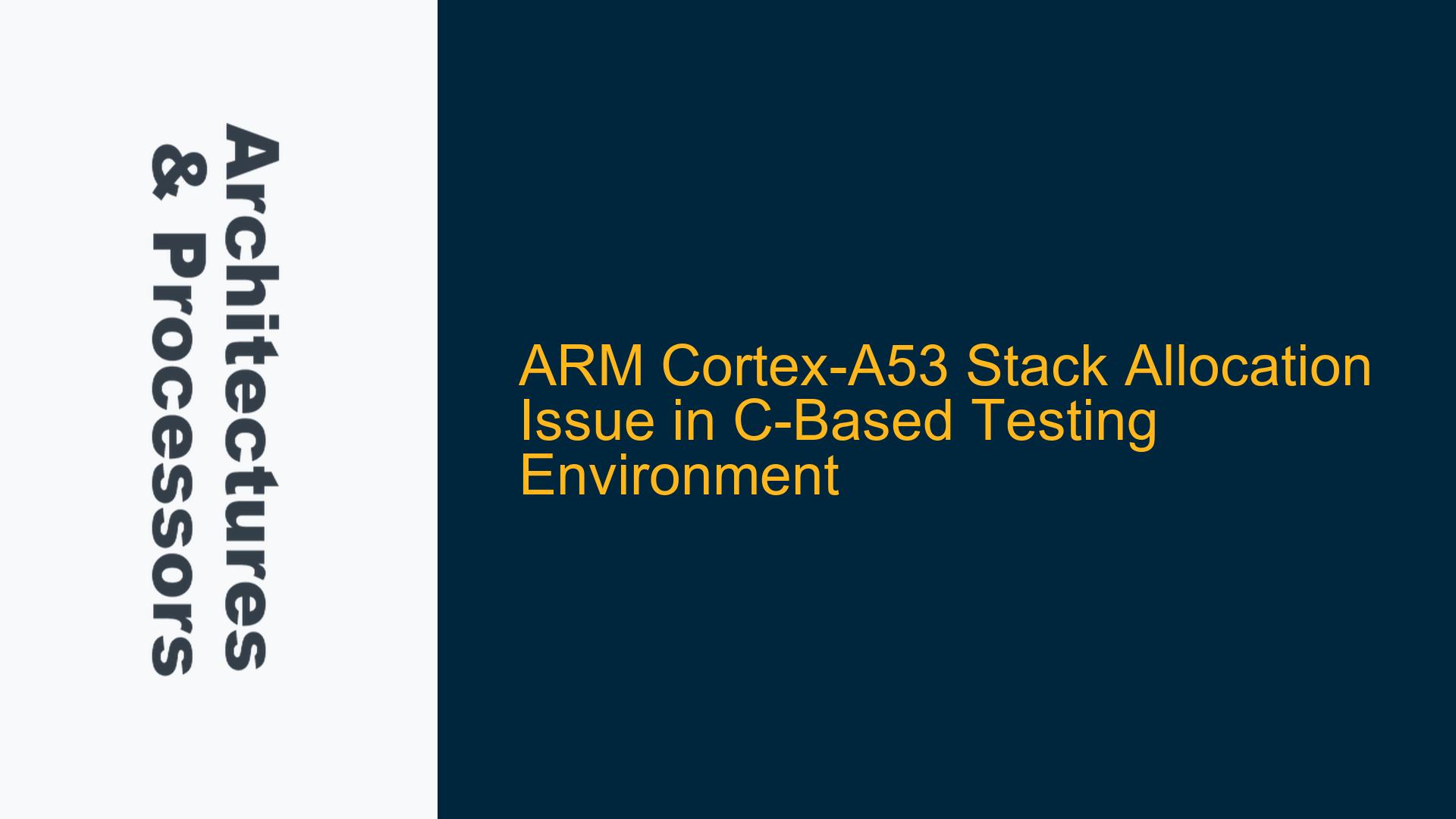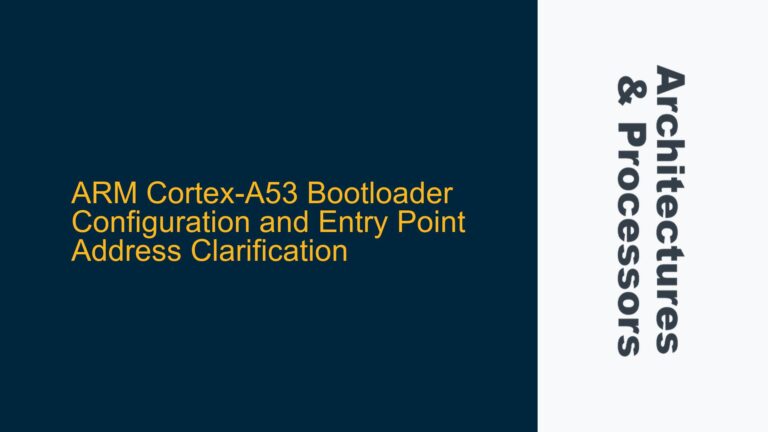Stack Misalignment Between C Code and SRAM Memory Map
The core issue revolves around the misalignment of stack allocation in a C-based testing environment for an ARM Cortex-A53 SoC. The processor executes the startup routines correctly, but when it transitions to the C code, the stack push operation fails because the stack pointer is not correctly initialized to point to the SRAM memory location. The SRAM is part of the bootmem subsystem in the SoC, and its address space is predefined in the SoC memory map. However, the stack pointer is pointing to an undefined memory location, causing the system to hang. This misalignment is a critical issue because the stack is essential for function calls, local variable storage, and interrupt handling in C programs.
The stack is initialized in the assembly startup file (bootcode.s) using the stack_top label defined in stackheap.s. The linker script (link_asm_aarch64.ld) defines memory sections such as .text, .data, and .bss, but it does not explicitly map the stack to the SRAM address space. This oversight results in the stack being allocated to an arbitrary memory location, which is not part of the SRAM or any valid memory region in the SoC.
The SRAM memory location is critical for the boot process because it is the first memory region accessible after reset. The bootmem subsystem is designed to initialize the SRAM and make it available for the stack and heap during the early stages of the boot process. If the stack is not correctly allocated to the SRAM, the system will fail to execute any C code that relies on stack operations, such as function calls or local variable storage.
Incorrect Linker Script Configuration and Stack Initialization
The root cause of the stack misalignment lies in the incorrect configuration of the linker script and the stack initialization process. The linker script (link_asm_aarch64.ld) does not explicitly define the memory region for the stack, leading to the stack being allocated to an undefined memory location. Additionally, the stack initialization in the assembly startup file (bootcode.s) relies on the stack_top label defined in stackheap.s, but this label is not correctly mapped to the SRAM address space in the linker script.
The stackheap.s file defines the stack and heap memory regions using the .space directive, but these definitions are not tied to the SRAM address space. The stack_top label is used to initialize the stack pointer in bootcode.s, but without a proper memory mapping in the linker script, the stack pointer ends up pointing to an invalid memory location. This issue is compounded by the fact that the GCC compiler chain does not automatically map the stack to a specific memory region unless explicitly instructed to do so in the linker script.
Another contributing factor is the lack of synchronization between the assembly-based and C-based testing environments. In the assembly-based testing environment, the stack is manually managed, and the memory layout is implicitly understood. However, in the C-based testing environment, the stack management is handled by the compiler and linker, requiring explicit memory mapping in the linker script. The transition from assembly to C-based testing has exposed this gap in the memory mapping configuration.
Correcting Stack Allocation with Linker Script Modifications and Memory Mapping
To resolve the stack misalignment issue, the linker script must be modified to explicitly map the stack to the SRAM address space. The following steps outline the necessary changes:
-
Define the SRAM Memory Region in the Linker Script: The linker script (
link_asm_aarch64.ld) must include a memory region definition for the SRAM. This definition should specify the starting address and size of the SRAM memory region. For example:MEMORY { SRAM (rwx) : ORIGIN = 0x00000000, LENGTH = 0x00010000 }This definition ensures that the linker is aware of the SRAM memory region and can allocate memory sections to it.
-
Map the Stack to the SRAM Memory Region: The linker script must explicitly map the stack to the SRAM memory region. This can be achieved by defining a section for the stack in the linker script and assigning it to the SRAM memory region. For example:
.stack (NOLOAD) : { . = ALIGN(8); _stack_start = .; . += 0x1000; /* 4KB stack size */ _stack_end = .; } > SRAMThis definition ensures that the stack is allocated to the SRAM memory region and is properly aligned.
-
Update the Stack Initialization in the Assembly Startup File: The stack initialization in the assembly startup file (
bootcode.s) must be updated to use the_stack_endsymbol defined in the linker script. For example:ldr sp, =_stack_endThis ensures that the stack pointer is correctly initialized to the end of the stack memory region in the SRAM.
-
Verify the Memory Map: After making these changes, the memory map should be verified to ensure that the stack is correctly allocated to the SRAM memory region. This can be done by examining the linker map file generated by the GCC compiler chain. The linker map file should show the stack section allocated to the SRAM memory region with the correct starting and ending addresses.
-
Test the C-Based Environment: Once the stack is correctly allocated to the SRAM memory region, the C-based testing environment should be tested to ensure that the stack operations are functioning correctly. This can be done by running a simple C program that performs stack operations, such as function calls and local variable storage, and verifying that the program executes without hanging.
By following these steps, the stack misalignment issue can be resolved, and the C-based testing environment can be successfully implemented. This solution ensures that the stack is correctly allocated to the SRAM memory region, enabling the processor to execute C code without encountering memory access issues.






